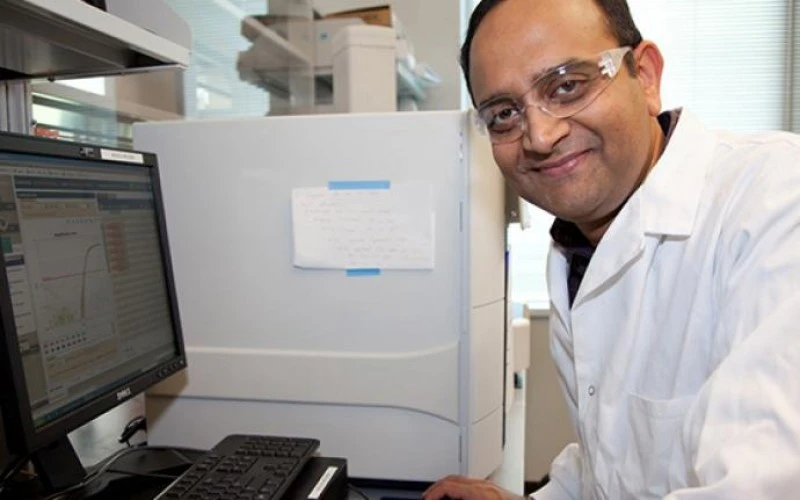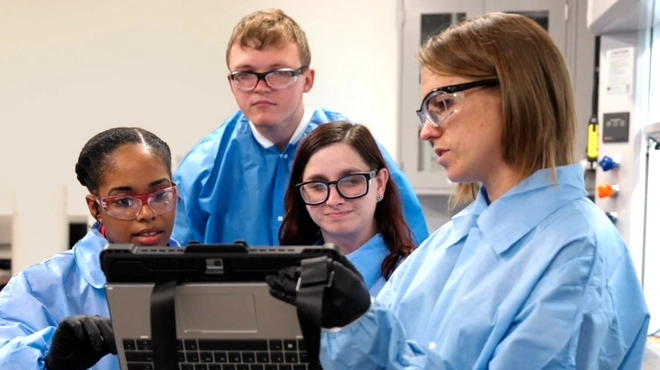Spinal muscular atrophy (SMA) offers challenges both exciting and daunting to biomedical researchers: Exciting because of its well understood genetics and daunting because no one has yet succeeded in delivering an approved therapy for patients with the devastating neurodegenerative disease.
Novartis researchers are hopeful that their efforts to develop SMA treatments that target the underlying mechanism of the disease could benefit patients. “I feel like it’s the closest I’ve been to changing the trajectory of lives or disease,” says Natalie Dales, a senior investigator and chemistry lead for the project at Novartis Institutes for BioMedical Research. “It’s infants and children who just don’t have any other choices.”
SMA patients harbor mutations in the SMN1 gene, leading to a loss of function. The defective gene can’t produce survival motor neuron (SMN) protein, which supports spinal motor neurons necessary for muscle movement. In the most severe form of the disease, patients rapidly lose motor neurons and symptoms such as muscle weakness and delayed development become apparent a few months after birth. Sadly, such cases happen often enough for SMA to be the most common genetic cause of infant and toddler deaths.

Without an intact SMN1 gene, patients rely on SMN protein from a “backup” gene called SMN2. This backup gene differs from SMN1 by a single DNA “letter” or nucleotide.
“The ‘spelling difference’ causes our cellular machinery to interpret the backup gene two different ways through a process called alternative splicing,” says Rajeev Sivasankaran, a senior investigator and research lead for the project at NIBR.
As a result, the gene generates only low levels of functional SMN protein, not enough for the motor neurons to develop normally.
In SMN2 splicing, our cellular machinery often skips exon 7, which is crucial to produce functional SMN protein. The small amount of intact SMN protein derived from SMN2 is not sufficient to make up for the loss of SMN1 in SMA patients. To address this fundamental genetic defect in SMA, the Novartis team embarked on a drug discovery effort aimed at identifying small-molecule compounds that boost inclusion of exon 7 and elevate levels of fully functional SMN protein.
Novartis researches SMA’s genetic roots - Tackling a rare disease



